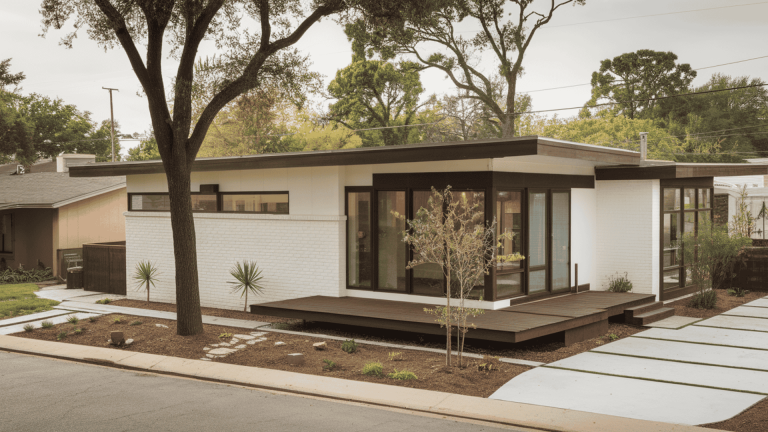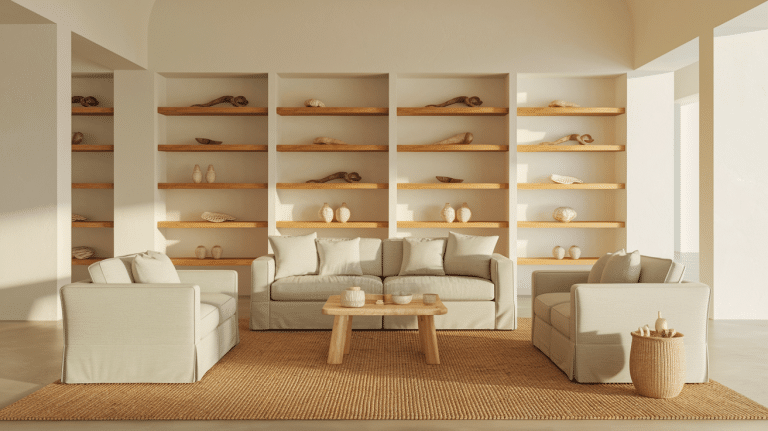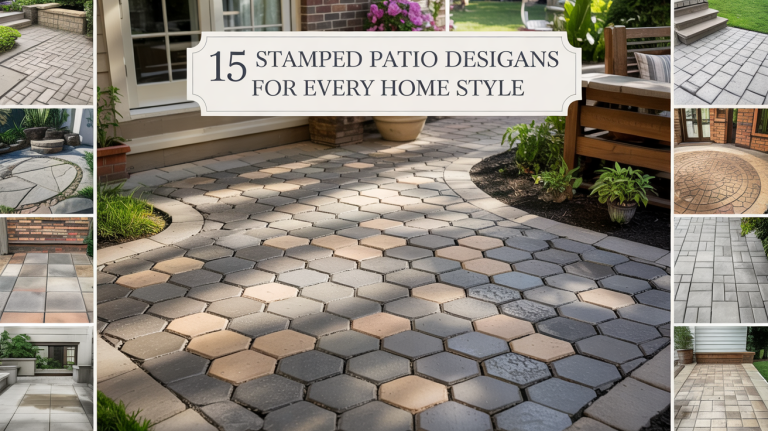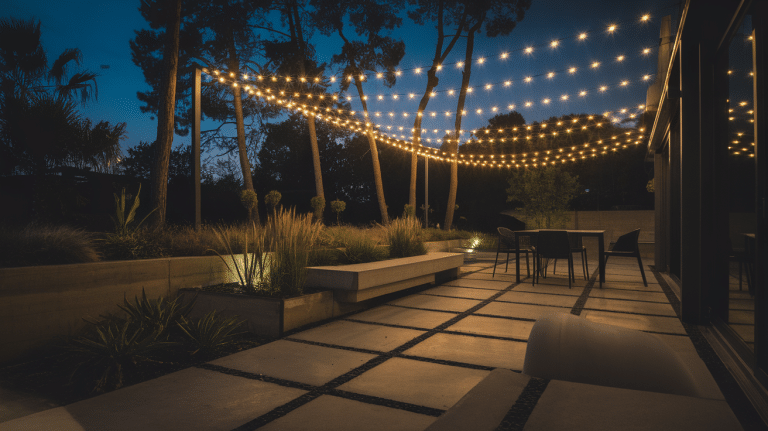Everything You Need to Know About Fence Kickboards
Fence damage often starts at the bottom, where water, soil, and lawn tools attack. These problems lead to rot, rust, and early replacement, which costs homeowners both time and money.
A fence kickboard provides a straightforward fix. This horizontal board at the base of your fence creates a shield against moisture, dirt, and daily wear. It protects the weakest part of your structure while adding a finished look to your property.
In this guide, we’ll show you how kickboards extend fence life, improve your yard’s appearance, and save you money over time.
You’ll learn about material options from classic wood to modern composites, understand proper installation techniques, and discover why this simple addition makes such a big difference for your fence investment.
What is a Fence Kickboard?
A fence kickboard is a flat, horizontal board that runs along the bottom of a fence. It sits at the base and extends the whole length of the fence structure. This simple addition serves as a shield for your fence, offering key help where it meets the ground.
The main job of a kickboard is to guard the fence against common issues. It blocks soil, grass, and water that would otherwise damage the fence base. When rain splashes up or lawn trimmers get too close, the kickboard takes the hit instead of your fence.
Most kickboards are placed a few inches above ground level. This small gap is important—it keeps the board from direct contact with wet soil while still giving full protection to your fence. The right position stops rot and decay before they start.
The Perks of Adding a Kickboard to Your Fence
Learn how a simple kickboard can protect your fence from wear, enhance its appearance, and increase its longevity.
1. Protection Against Moisture & Dirt
Kickboards work as a guard against water damage. They block rain, snow, and dampness that would harm your fence base. Without this shield, wood can rot and metal can rust over time.
These boards also stop dirt from making a mess. When rain hits the ground or mulch, it often splashes back onto fences. A kickboard catches this dirty splash, keeping your fence clean and good-looking longer.
2. Increased Durability
Lawn tools can be rough on fences. Weed trimmers and mowers often nick or cut fence bottoms during yard work. Kickboards take these hits instead, acting as a bumper for your main wall.
The extra layer fights daily wear too. When kids play ball, pets run around, or guests bump into the fence, the kickboard absorbs the impact. This stops warping and cracking, which happens when wood stays wet or gets knocked around.
3. Aesthetic Appeal
Kickboards add a clean finish to any fence line. They create a sharp, tidy edge that makes your whole yard look more put-together. This small touch gives even basic fences a custom feel.
Kickboards can match any fence style. Whether you have a white picket fence or natural wood privacy panels, the right kickboard ties everything together. You can also paint or stain them to match your home’s colors.
4. Pest Control
Bugs and small animals love to find ways under fences. Kickboards close these gaps, stopping pests from using your fence as a highway into your yard. This helps keep ants, termites, and mice away from your home.
Pet owners find kickboards extra helpful. They stop dogs from digging escape routes under the fence. The solid barrier makes your yard more secure for both pets and kids.
5. Improved Privacy
Small gaps at fence bottoms can be a privacy issue. Kickboards cover these spaces, making sure nobody can see through from ground level. This is key for yards that aren’t perfectly level.
The extra height from a kickboard also makes your fence work better. Even a few inches more coverage helps create the private, cozy outdoor space most homeowners want.
6. Long-Term Cost Savings
Adding a kickboard now saves money later. By stopping damage before it starts, you avoid costly fence repairs or early replacement. This small investment pays off over many years.
Maintenance costs drop, too. You’ll spend less time and money on fence upkeep when the most damage-prone area is protected. Fewer paint touch-ups and fewer broken boards mean less work for you.
7. Enhances Curb Appeal
First looks matter when it comes to homes. A neat, complete fence with a kickboard catches the eye in a good way. It shows care and attention to detail that buyers and neighbors notice.
Home value often rises with these small touches. A well-built fence with proper finishing details like kickboards suggests the whole property is well-maintained. This can help if you ever decide to sell.
Material Options for Fence Kickboards: Pros and Cons
1. Wood
Wood kickboards offer a timeless look that many homeowners love. They blend well with most fence types and can be cut, shaped, and installed with basic tools. Wood feels warm and natural in any yard setting. You can easily paint or stain wood kickboards to match your home or create a fresh new look.
Pros:
- Gives a classic, natural appearance that suits most homes
- Can be cut, shaped, and fitted to any fence design
- Takes paint and stain well for custom colors
- Often costs less upfront than other materials
Cons:
- Needs regular care to prevent water damage and rot
- Requires new paint or sealing every few years
- Can warp or crack in harsh weather conditions
- May attract insects like termites if not treated
2. Vinyl
Vinyl kickboards have become a popular choice for busy homeowners. These plastic-based boards come ready to install with no need for paint or stain. They stand up to rain, snow, and sun without fading or breaking down. Most vinyl kickboards come in white, but other colors are available to match your fence.
Pros:
- Almost no upkeep needed after installation
- Resists water, mold, and insects naturally
- Keeps its color without painting or staining
- Cleans easily with just water and mild soap
Cons:
- Costs more at the start than basic wood options
- May look too modern for some historic homes
- Limited color and texture options
- Can crack in extreme cold or high-impact hits
3. Composite
Composite kickboards offer the best of both worlds. Made from a mix of wood fibers and plastic, they look like wood but last like vinyl. These boards resist weather, insects, and fading while giving your fence a premium look. Though pricier upfront, many homeowners find the long life worth the cost.
Pros:
- Combines the look of wood with the strength of plastic
- Needs almost no maintenance year after year
- Won’t rot, split, or attract pests
- Made partly from recycled materials in many cases
Cons:
- Highest initial price among common materials
- Can feel hotter to the touch in direct sunlight
- May fade slightly over many years of sun exposure
- Heavier than wood, which can make installation harder
Common Pitfalls to Avoid with Your Fence Kickboard
| Mistake | Description |
|---|---|
| Improper Alignment | Ensure the kickboard is level and evenly spaced to avoid an uneven or crooked appearance. |
| Incorrect Measurements | Double-check measurements before cutting to avoid gaps or misalignment. |
| Not Accounting for Weather | Choose the right material based on your climate—wood may not be ideal for wet environments. |
| Overlooking Maintenance | Regular upkeep is essential to extend the life of your kickboard, especially if it’s wood. |
Wrapping Up
Adding a kickboard to your fence brings clear benefits. It shields the bottom of your fence from water, soil, and damage. This simple addition works hard to keep your fence looking good and lasting longer.
The right material makes a difference. Wood offers classic appeal with some upkeep. Vinyl is easy to care for and has a modern look. Composite provides the best durability if you can spend a bit more at the start.
Think about what would work best for your yard. Consider your local weather, your fence type, and how much time you want to spend on maintenance. The small cost of adding a kickboard now can save you from bigger fence repair bills later.
Your fence is more than just a boundary – it’s part of your home’s first impression. A kickboard finishes the look while doing the practical job of protection. This double duty makes it a smart choice for any fence owner.
Why not give your fence this extra layer of care? Your yard will look better, your fence will last longer, and you’ll spend less time on repairs. That’s a winning combination for any homeowner.
Frequently Asked Questions
1. How high should I Place My Fence Kickboard?
Place your kickboard 2-4 inches above ground level to prevent direct soil contact while still protecting the fence.
2. Can I Add a Kickboard to an Existing Fence?
Yes, kickboards can be added to most standing fences with basic tools and hardware.
3. How Long Do Fence Kickboards Typically Last?
Wood kickboards last 5-7 years, vinyl about 15 years, and composite can last 20+ years with proper installation.
4. Do I Need Special Tools to Install a Kickboard?
Basic tools work fine – you’ll need a saw, drill, measuring tape, level, and screws or nails.















